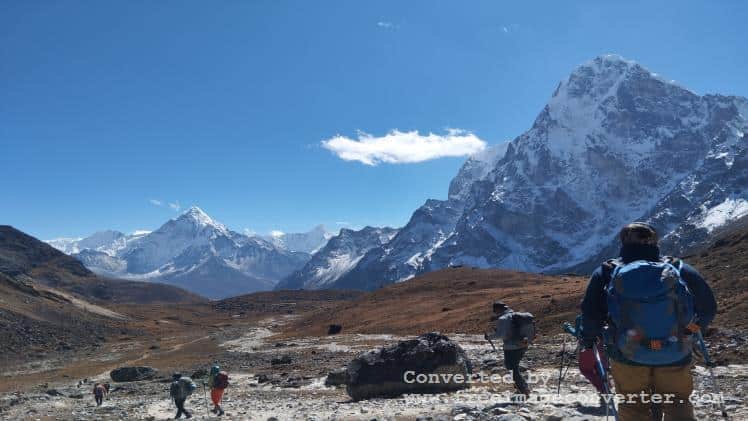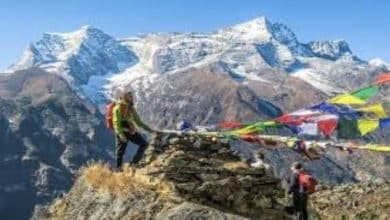How Technology Elevates Your Trekking Experience in Nepal

For decades, trekking in Nepal has been a raw and traditional experience. Adventurers walked through rugged trails with only a paper map, a compass, and the guidance of local villagers. While the spirit of trekking remains unchanged—immersion in natural beauty, culture, and challenge—the way we prepare and experience treks has been transformed by technology.
Today, technology enhances safety, comfort, and connection for trekkers exploring Nepal’s mountains, whether you’re aiming for the legendary Everest Base Camp Trek or a shorter, more tranquil journey elsewhere in the country. From GPS mapping to lightweight gear, digital wallets to emergency communication tools, modern trekkers have access to innovations that make their journeys smoother and safer, without diminishing the authenticity of the adventure.
In this blog, we’ll explore the technologies that enhance your trekking journey in Nepal, explaining their benefits, applications, and why they’ve become essential companions in the Himalayas.
GPS Navigation and Mapping Apps
One of the greatest advancements for trekkers is the accessibility of GPS navigation tools. In the past, paper maps were essential, but they could be easily damaged or misread in Nepal’s unpredictable weather.
Today, apps like Maps.me, AllTrails, or Gaia GPS provide detailed offline maps. You can download specific routes before your trek—whether it’s the winding paths of the Annapurna Circuit or the climbs through the Khumbu Valley on the way to Everest Base Camp—and access them without internet. These apps track your location in real-time, reducing the risk of getting lost, especially on side trails or lesser-known routes.
While guides remain invaluable for cultural context and safety, having a GPS app adds a layer of reassurance and independence for trekkers who like to keep track of their own progress.
Weather Forecasting Tools
Weather in the Himalayas changes quickly. Sunshine can give way to snowfall within hours, especially at higher altitudes. Technology now makes it easier to anticipate and adapt to these changes.
Apps like Windy, AccuWeather, or Yr.no provide localized forecasts for trekking regions. On routes like Langtang Valley, where sudden rain or snow is common, knowing the forecast helps you plan your day, start earlier to avoid storms, or decide when to take rest days.
For Everest Base Camp trekkers, weather forecasting is particularly critical for flights to and from Lukla. Flight delays are frequent, but with accurate forecasts, trekkers can prepare mentally and adjust their itineraries accordingly.
Portable Solar Chargers and Power Banks
Electricity is available in most trekking villages, but at higher altitudes, it’s often unreliable or comes at a cost. Charging your phone, camera, or headlamp might cost a few dollars per hour in places like Gorak Shep on the Everest Base Camp trek.
That’s why many trekkers now carry solar chargers or high-capacity power banks. Lightweight solar panels that attach to backpacks can charge devices while you walk. Power banks with 20,000 mAh capacity or more can keep your phone alive for days.
This technology ensures your devices stay functional for navigation, communication, or capturing memories, without relying heavily on local charging stations.
Lightweight Technical Gear
Trekking gear has seen massive improvements thanks to modern materials.
- Down jackets now use lightweight, compressible insulation that keeps trekkers warm at sub-zero temperatures without adding bulk.
- Sleeping bags are designed with advanced thermal technology, making nights at base camp or high passes like Thorong La on the Annapurna Circuit far more comfortable.
- Waterproof boots and clothing are engineered with breathable membranes, keeping trekkers dry without trapping sweat.
These innovations mean trekkers can pack lighter while staying warmer, drier, and more comfortable.
Water Purification Technology
Access to safe drinking water has always been a concern for trekkers. Buying bottled water on the trail contributes to plastic waste, and untreated local water can carry harmful bacteria.
Modern water purification tools like UV sterilizers (Steripen), filter bottles (LifeStraw), and portable pumps make it easy to drink safely from streams or taps along the trek.
On routes like the Annapurna Circuit, where water is plentiful but not always clean, these tools are invaluable. They save money, reduce environmental impact, and give trekkers peace of mind.
Communication Devices and Emergency Tools
One of the most critical uses of technology in trekking is for safety communication. While mobile networks are expanding in Nepal, they are still patchy at higher elevations. To bridge this gap, trekkers use:
- Satellite phones: Still the most reliable way to call for help from remote areas.
- GPS messengers (Garmin inReach, SPOT): Allow trekkers to send SOS signals, share their location, or send short messages even without cell coverage.
- Walkie-talkies: Useful for group treks, especially in large or spread-out parties.
For Everest Base Camp trekkers, where altitude sickness is a real risk, having access to emergency communication tools can make the difference between life and death in critical situations.
Travel and Trekking Apps
Travel-specific apps enhance the logistics of a trekking journey.
- Booking platforms (Booking.com, Agoda) allow you to secure accommodation in Kathmandu or Pokhara before your trek.
- Digital payment apps like eSewa or Khalti are becoming popular in cities, though cash is still king in the mountains.
- Language apps like Google Translate help trekkers communicate with locals in Nepali or Tibetan dialects. Even learning a few phrases like “Namaste” or “Dhanyabad” (thank you) can go a long way.
These apps streamline the experience before and after the trek, making transitions smoother.
Digital Cameras and Drones
Technology has revolutionized the way trekkers capture memories. Digital cameras with weather-sealed bodies are ideal for the rugged conditions of Nepal. Many trekkers also bring compact drones to capture aerial footage of places like Namche Bazaar or the Annapurna Sanctuary.
While drones are subject to local regulations and often require special permissions, they allow trekkers to see the Himalayas from breathtaking new perspectives. A drone shot of Everest at sunrise or the turquoise Gokyo Lakes is unforgettable.
Online Learning and Training Tools
Preparing for a trek is as important as the trek itself. Online resources now make it easier than ever to train properly. Fitness apps provide structured programs that build stamina and strength for long days of trekking. Virtual altitude simulators help trekkers understand how their bodies may respond to reduced oxygen.
For example, those preparing for Everest Base Camp can train with apps that simulate daily step counts and elevation gains, ensuring they’re physically ready for the challenge.
Insurance and Online Safety Registration
Travel insurance is critical for treks like Everest Base Camp or Annapurna Circuit, where helicopter evacuation might be required. Many insurers now allow you to purchase, manage, and update policies online, simplifying the process.
Additionally, Nepal’s trekking authorities increasingly encourage trekkers to register their trips digitally. Systems like the Trekker’s Information Management System (TIMS) are moving toward online records, improving safety by keeping track of who is on which trail.
E-Books and Audio Guides
Long trekking days often end with free time in teahouses. Technology has made it easy to carry entertainment and education without extra weight. E-books and audio guides let trekkers learn about Nepal’s culture, Buddhism, or the history of mountaineering. Apps like Audible allow trekkers to enjoy stories while resting in Namche Bazaar or waiting for sunrise at Poon Hill.
Internet Access and Connectivity
Wi-Fi has become more available along trekking routes, though it often comes at a cost. Services like Everest Link provide prepaid internet cards for trekkers in the Khumbu region, making it easier to stay in touch with family or post updates.
While some choose to disconnect completely, others find comfort in knowing they can share their journey or access information when needed.
The Balance Between Technology and Authenticity
One question often asked is whether technology detracts from the raw, authentic trekking experience Nepal is famous for. The truth is, it depends on how you use it.
Technology should be seen as a tool for safety, preparation, and enhancement, not a replacement for immersion. A GPS app can prevent you from losing your way, but it can’t replace the joy of asking a local Sherpa for directions. A solar charger keeps your camera alive, but the real magic lies in the sunrise over Annapurna.
When used mindfully, technology doesn’t diminish the trekking experience—it amplifies it.
Final Thoughts
Trekking in Nepal has always been about challenge, discovery, and connection—with nature, with culture, and with oneself. Today, technology plays an important role in ensuring that these journeys are not only inspiring but also safe and sustainable.
From GPS apps that guide you through trails to water purifiers that reduce plastic waste, from satellite messengers that save lives to lightweight gear that makes trekking easier, modern innovations enhance every aspect of the adventure.



